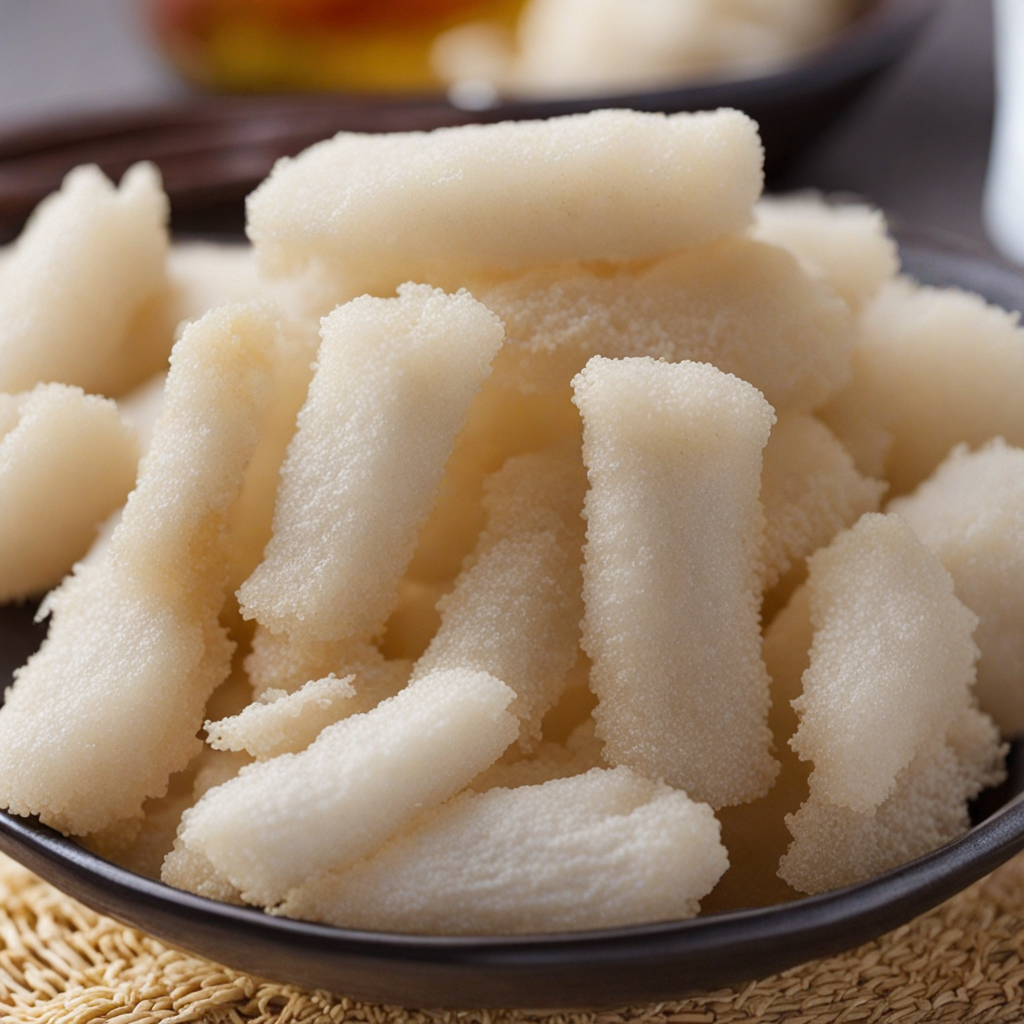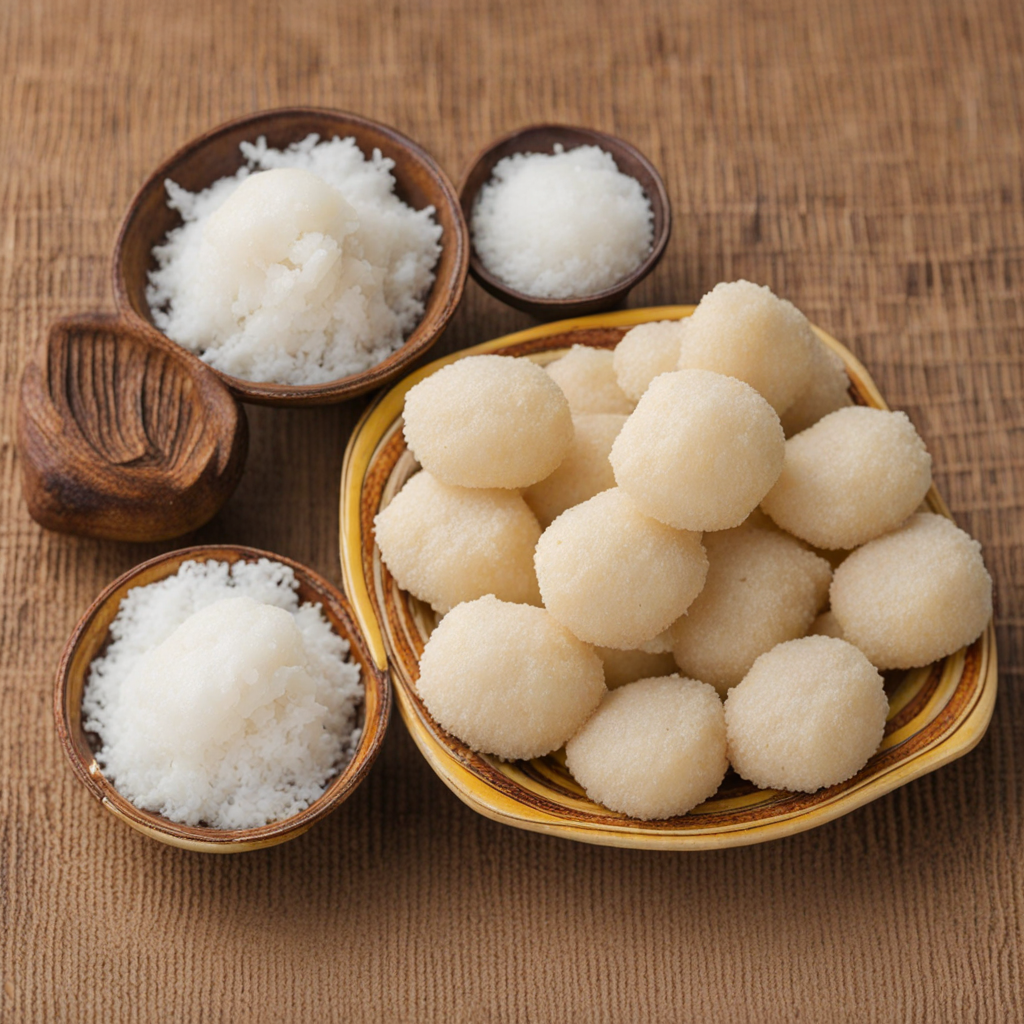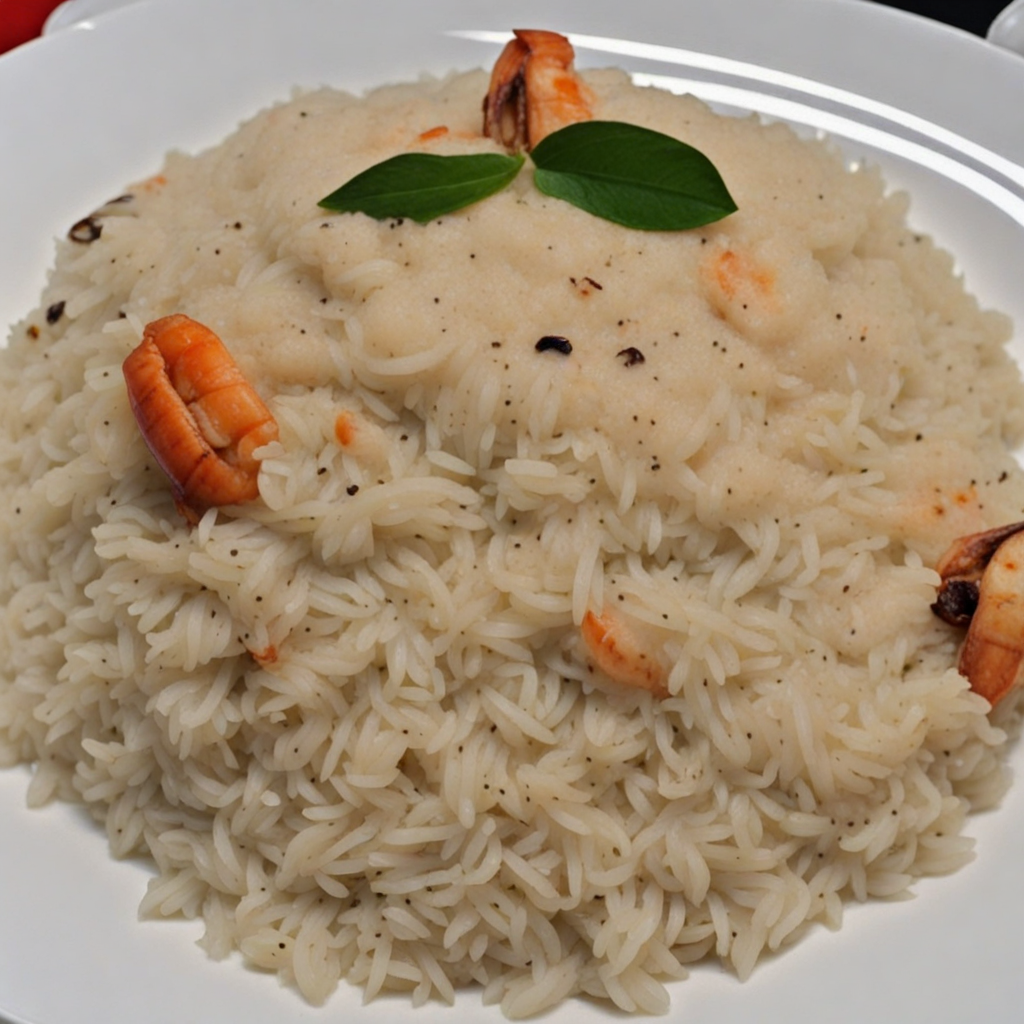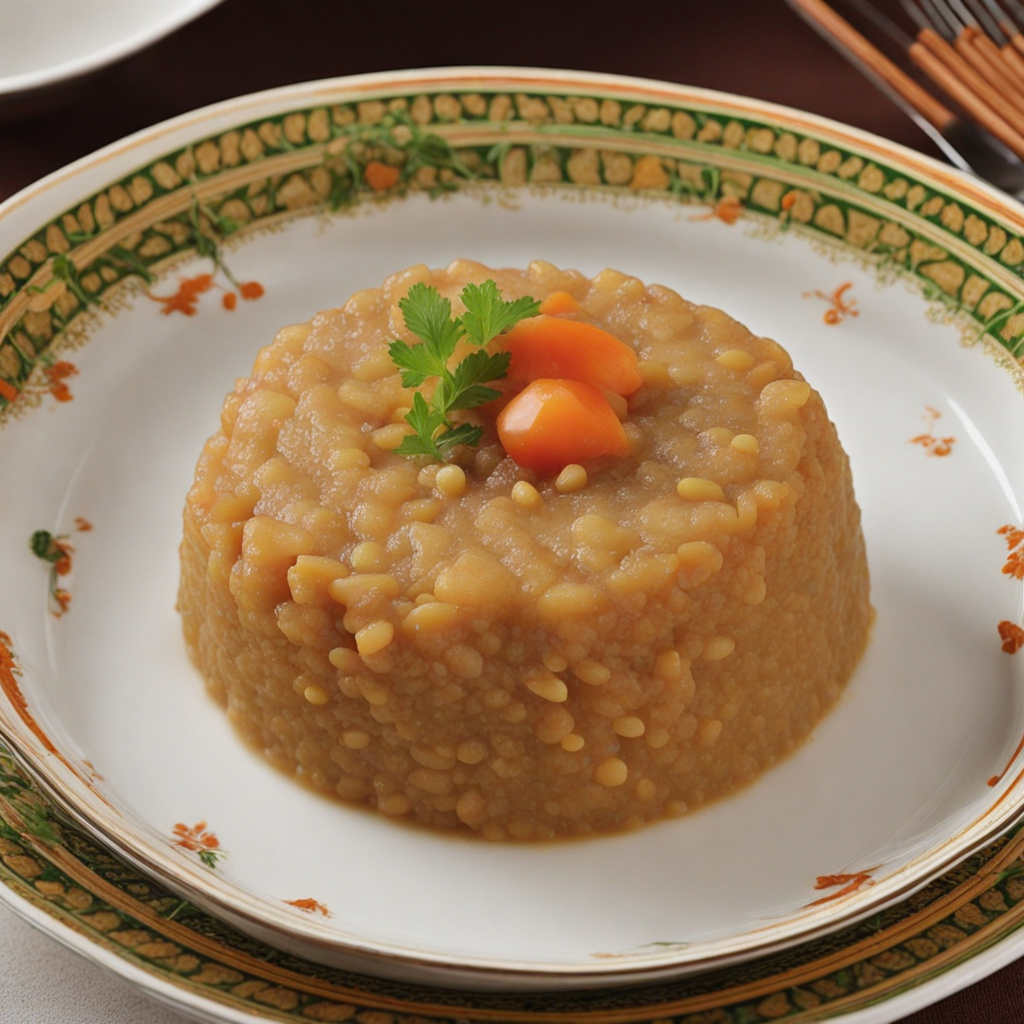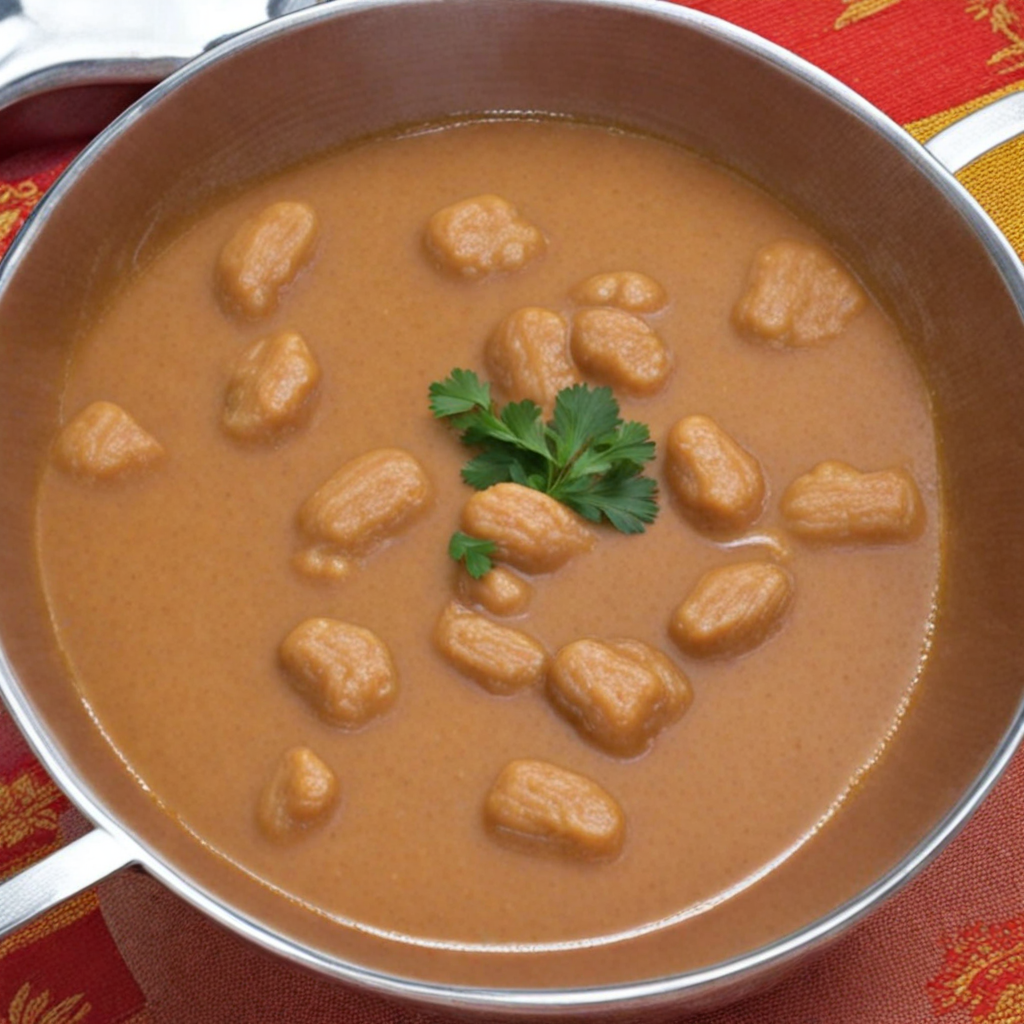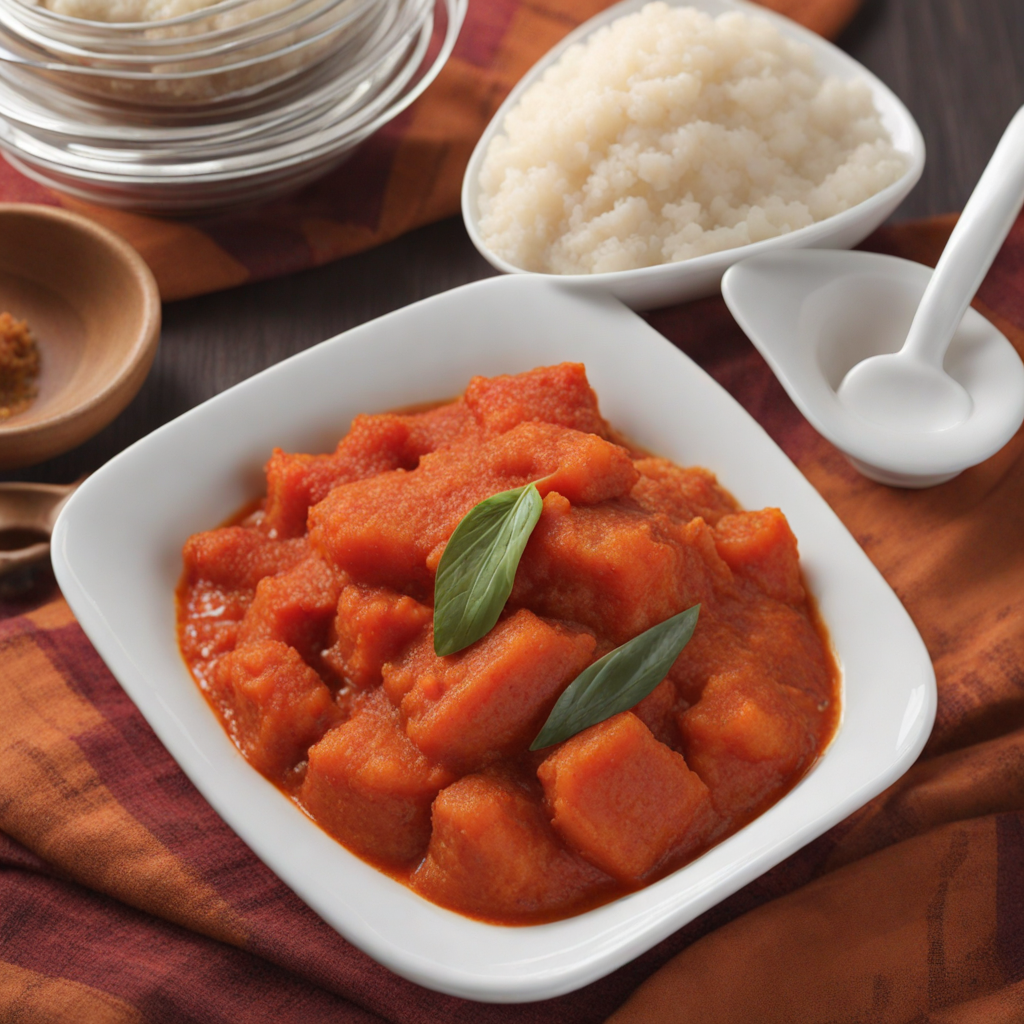Gari
Gari is a staple food in Nigeria made from cassava, a tuber that is native to South America but has become a fundamental crop in many African countries. The process of making gari involves peeling, grating, fermenting, and then roasting the cassava in a hot, dry environment. This unique preparation results in a grainy, versatile product with a slightly tangy flavor and a texture that can range from fine to coarse. Gari is often enjoyed as a quick and convenient meal option, and its nutty taste pairs well with a variety of dishes, making it a beloved choice among many Nigerians.
How It Became This Dish
Gari: A Staple of Nigerian Cuisine and Culture #### Introduction Gari, a granular flour made from cassava (Manihot esculenta), is a staple food in Nigeria and much of West Africa. Known for its versatility and ease of preparation, gari serves as a fundamental part of the diet for millions. This humble food embodies a rich history that intertwines with the cultural identity of the Nigerian people. In this exploration, we will delve into the origins of gari, its cultural significance, and its evolution over the years. #### Origins of Gari The history of gari is closely linked to the history of cassava itself. Native to South America, cassava was introduced to Africa by Portuguese traders in the 16th century. The crop quickly adapted to the African climate and became a crucial food source, especially in regions where other crops struggled to thrive. By the 19th century, cassava had become widely cultivated across West Africa, including Nigeria. The process of transforming cassava into gari is age-old. Traditionally, the roots of the cassava plant are harvested, peeled, and grated. This is followed by fermentation, which not only helps in flavor development but also reduces the levels of cyanogenic compounds in cassava, making it safe to eat. The fermented pulp is then wrapped in a cloth, pressed to remove excess moisture, and finally roasted in a dry pan until it becomes a coarse, toasted flour. This meticulous process highlights the ingenuity of Nigerian food systems, transforming a potentially toxic root into a beloved staple. #### Cultural Significance Gari holds immense cultural significance in Nigeria, serving not only as a food source but also as a symbol of resilience and resourcefulness. It is often referred to in proverbs, songs, and folklore, emphasizing its role in the daily lives of the people. For many Nigerian families, gari is a source of sustenance that can be easily prepared and consumed in various forms, making it a beloved staple across different ethnic groups. One of the most common ways to enjoy gari is as "eba," a dough-like dish made by mixing gari with hot water. Eba is typically served with soups and stews, such as egusi (melon seed soup) or ogbono (wild mango seed soup), providing a filling and nutritious meal. Gari can also be used to make "gari soakings," a refreshing dish where gari is mixed with cold water, sugar, and sometimes milk or groundnut (peanut) for a quick snack, especially popular in the warm climates of Nigeria. Moreover, gari is not only a food for everyday consumption but also plays a role in social events and rituals. It is often served during communal gatherings, weddings, and funerals, symbolizing hospitality and community spirit. Gari’s ability to be prepared quickly and served in large quantities makes it an ideal food for feeding crowds, reinforcing its status as a communal dish. #### Development Over Time As Nigeria has evolved, so too has the role of gari within its society. In the early 20th century, gari was primarily consumed by rural populations, with its production being a family or community enterprise. However, as urbanization increased and people migrated to cities in search of better opportunities, the demand for gari surged. This demand led to the commercialization of gari production, with several processing plants established to meet the needs of urban consumers. By the late 20th century, gari had found its way into international markets, contributing to Nigeria's economy and enhancing its status on the global food scene. This rise in popularity has led to innovation in gari production, with various brands emerging, each offering unique flavors and variations. Some producers have experimented with fortifying gari with vitamins and minerals, responding to nutritional needs and health concerns within the population. The recent years have seen a resurgence of interest in traditional foods, driven by a growing awareness of the health benefits of locally sourced ingredients. Gari, being gluten-free and rich in carbohydrates, has gained favor among health-conscious consumers. Additionally, its versatility has inspired chefs and home cooks alike to explore creative uses for gari beyond traditional dishes, such as in baked goods and snacks. #### Global Recognition and Future Prospects Today, gari is not merely a Nigerian food; it has garnered recognition beyond the borders of West Africa. Its growing popularity in diaspora communities has led to the establishment of various food festivals and cultural events that celebrate West African cuisine. As a result, gari has become a culinary ambassador for Nigerian culture, fostering a sense of pride among Nigerians both at home and abroad. Looking forward, the future of gari appears promising. As the global food landscape continues to evolve, there is a growing appreciation for traditional, sustainable foods. Gari’s resilience as a crop, alongside its nutritional benefits and cultural significance, positions it well for continued relevance in both local and international markets. Efforts to promote sustainable agricultural practices among cassava farmers also promise to enhance the quality and availability of gari. #### Conclusion Gari is more than just a food; it is a cultural artifact that embodies the history, resilience, and creativity of the Nigerian people. From its origins with the introduction of cassava to its transformation into a beloved staple, gari has played a pivotal role in the lives of many. As it continues to evolve and adapt to modern tastes and trends, gari remains a symbol of community, tradition, and nourishment, ensuring that its legacy will endure for generations to come.
You may like
Discover local flavors from Nigeria


